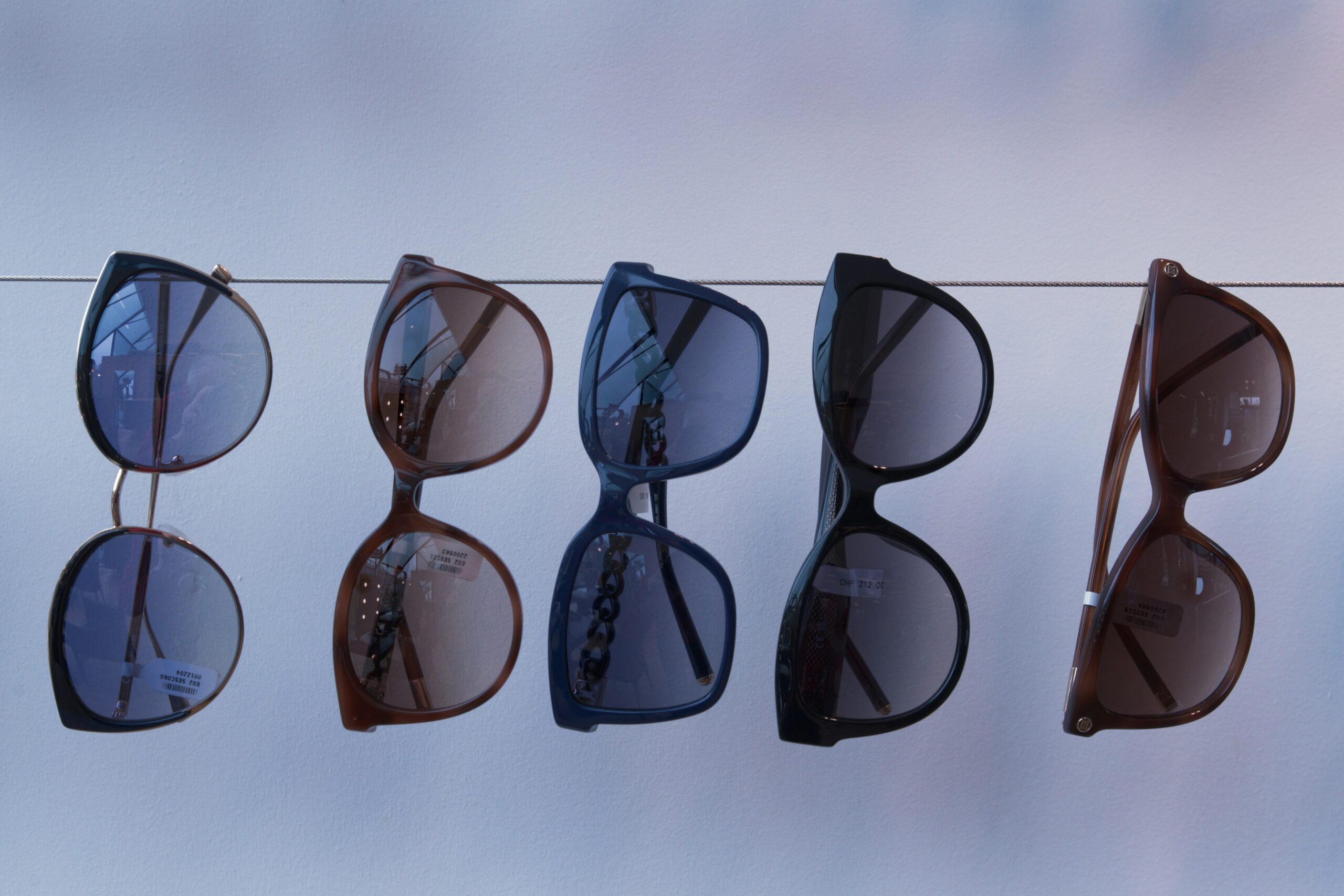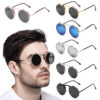Understanding Face Shapes
When selecting the ideal sunglasses, it is essential to consider the unique characteristics of your face shape. There are five primary face shapes: oval, round, square, heart, and oblong. Each shape exhibits distinct features that can significantly influence the choice of sunglasses.
The oval face shape is characterized by balanced proportions, with a gently rounded jawline and forehead. Individuals with this face shape often find it easier to choose sunglasses since a variety of styles complement their features. Oversized and rectangular sunglasses frequently work well for enhancing the harmonious proportions of an oval face.
Conversely, round faces feature softer contours with equal width and length. The lack of angularity can make this face shape appear fuller, thus sunglasses that add structure and definition are advisable. Angular frames, such as rectangular or square styles, can create a striking contrast and enhance the overall balance of proportions.
Those with square face shapes present strong jawlines and foreheads, with equal width throughout. To soften these angular features, sunglasses with round or oval frames can prove advantageous. This softness adds a touch of harmony and helps to frame the face gracefully. Additionally, oversized frames can also add sophistication and elegance.
Heart-shaped faces possess a wider forehead and a narrow chin, creating a distinctive silhouette. For this face shape, sunglasses that narrow at the bottom, such as aviators or cat-eye styles, complement the features by drawing attention away from the forehead while accentuating the cheekbones.
Lastly, oblong faces are longer than they are wide, often featuring high cheekbones and a longer chin. Sunglasses that are wider than they are tall can create an effective balance. Frames that provide additional width, such as oversized or wraparound styles, work especially well for these individuals.
Sunglasses Styles for Each Face Shape
Choosing the right sunglasses can significantly enhance the natural features of your face, making it essential to consider your face shape when selecting a style. Various face shapes, including oval, round, square, heart, and diamond, require different types of sunglasses to achieve a complementary look.
For those with an oval face, characterized by balanced proportions, oversized or angular sunglasses frames are often the most flattering. The versatility of this face shape allows for a variety of styles, including geometric shapes, which lend a bold contrast to the soft contours of the face. Oversized frames also add a sense of glamour while emphasizing the elongated face.
In contrast, individuals with round faces should consider angular or rectangular sunglasses. These styles create lines that elongate the face and add definition to softer features. Straight lines in the frames help to counterbalance the curves of a round face, providing a more structured appearance. Cat-eye frames can also enhance the cheekbones and draw the gaze upwards, providing an elegant lift.
For those with square faces, rounded sunglasses are an excellent choice. The curves of oval or round frames soften the strong jawline and forehead, balancing the angular features. Gradients and soft shapes can add an element of sophistication while contributing to a more refined appearance.
Heart-shaped faces, featuring a wider forehead and narrower chin, benefit from sunglasses that draw attention away from the upper face. Styles such as aviators or rimless sunglasses can be particularly flattering as they provide a sense of balance. Meanwhile, diamond-shaped faces look best in frames that feature wider tops, such as oval or cat-eye styles, as they enhance the cheekbones while attracting attention to the eyes.
By understanding your face shape and selecting corresponding sunglasses styles, you can enhance not only your appearance but also your confidence. With the right choice of sunglasses, you can achieve a look that is both stylish and harmonizing with your facial features.
Color and Lens Considerations
When selecting sunglasses, the choices of color and lens are pivotal in ensuring not only style but also functionality. The color of the frames and lenses can significantly alter the overall appearance and can also complement an individual’s skin tone and personal style. For instance, frames in warm colors such as red, brown, or gold can enhance a warm skin tone, while cool colors like blue, gray, or silver may be more suitable for those with cooler skin tones. Understanding the interplay between these colors is essential for achieving a harmonious look.
Beyond aesthetics, the lens type also plays a crucial role in enhancing the performance of sunglasses. Different lens options cater to various needs, whether for sports, casual wear, or regular driving. Polarized lenses are particularly beneficial for reducing glare, making them an excellent choice for outdoor activities or driving. These lenses improve visual clarity and can help protect the eyes from harmful light rays. Gradient lenses, on the other hand, transition from a darker color at the top to a lighter shade at the bottom. This style is not only fashionable but also practical, providing ample shading for sunlight while allowing for easier visibility closer to the ground.
Moreover, there are mirrored lenses which not only offer a striking appearance but also enhance privacy and reduce glare. It is also essential to consider UV protection when selecting sunglasses; ensuring that the lenses block out 100% of both UVA and UVB rays is critical for safeguarding the eyes. A well-made pair of sunglasses, harmonizing color with the appropriate lens type, can provide a stylish yet functional solution that meets both aesthetic desires and protective needs.
Final Tips for Choosing Sunglasses
Choosing the perfect sunglasses involves more than merely selecting a trendy pair; it requires a thoughtful approach to ensure comfort, functionality, and aesthetics that complement your unique face shape. First and foremost, it is essential to check for a proper fit. Sunglasses should sit comfortably on the nose without sliding down or pinching. To guarantee this, pay attention to the temple length, bridge width, and lens height. Sunglasses that fit well will not only enhance your appearance but also provide necessary protection from harmful UV rays.
Comfort is equally crucial in your selection process. Be aware of the weight of the sunglasses and the materials used in their construction. Heavier glasses can become uncomfortable over extended wear, leading to headaches or discomfort on the nose and ears. Opt for styles that not only suit your face but also feel lightweight and balanced. Additionally, consider the function of your sunglasses; polarized lenses are beneficial for reducing glare, especially if you spend time near water or driving. Furthermore, photochromic lenses can adapt to changing light conditions, providing versatility for various environments.
Another important tip is to try on a range of styles. What works for someone else may not flatter your face shape. By experimenting with different designs, such as aviators, wayfarers, or oversized frames, you can discover which suits your style best. Moreover, current fashion trends have introduced variations in colors and patterns that allow for personalization. However, it is essential to balance personal preferences with timeless styles that will remain fashionable over the years. Ultimately, selecting the right sunglasses involves both aesthetic choices and practical considerations, ensuring that your sunglasses not only look great but also serve their protective purpose effectively.






